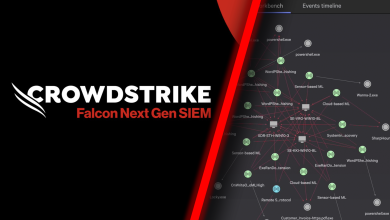Observability Leaders Experience Fewer Outages and Resolve Downtime 4x Faster

Splunk Inc., the cybersecurity and observability leader, in collaboration with Enterprise Strategy Group, today released the State of Observability 2023, an annual global research report that examines the role of observability in managing today’s increasingly complex technology environments. The third annual report surveyed 1,750 observability practitioners, managers and experts from organisations with 500 or more employees, providing the largest view and analysis on the observability space.
Observability has matured beyond its early adopter position and is now foundational for modern enterprises to achieve full visibility into today’s complex technology environments. Research shows how observability is instrumental in reducing outages, improving app reliability, growing revenue, strengthening customer experience (CX) and establishing digital resilience.
The report defines observability leaders as organisations with at least 24 months of experience with observability. In addition, leaders achieved the highest rank in these five factors: the ability to correlate data across all observability tools, the adoption of AI/ML technology within their observability toolset, skills specialisation in observability, the ability to cover both cloud-native and traditional application architectures and the adoption of AIOps.
A key finding is how observability leaders are four times as likely to resolve instances of unplanned downtime in minutes, versus hours or days. This is notable as 76% of all respondents report that downtime can cost up to $500,000 per hour. It’s clear that a faster approach to issue resolution can drive significant cost savings.
Key findings in Asia include:
- Japan and Singapore lag in adopting observability: 48% and 41% of respondents are classified as beginners, respectively, while only 1% and 6% were leaders.
- ANZ and India are mature adopters: only 25% and 18% of respondents are categorised as beginners in their respective markets.
- Singapore teams struggle with hiring: 57% report challenges related to both the quantity and quality of IT operations staff (versus 41% across other countries). On top of that, organisations are experiencing lower efficiency as more staff “quiet quit” (45% versus 31%).
- Singapore aggressively adopting AIOps tools: 36% are in the process of deploying AIOps solutions (versus 24% globally).
“With the rising complexity of today’s technology environments and the direct connection between reducing disruptions and optimal customer experiences, observability is fundamental to the successful operations of modern businesses,” said Spiros Xanthos, SVP and the General Manager for the Observability business at Splunk. “Observability enables businesses to keep their software and infrastructure reliable, systems secure and customers happy, making it a critical component to any organisation’s resilience strategy.”
Other key research findings include:
- Fewer outages, disruptions to customers. Leaders experience 33% less outages per year than beginners. (On average, beginners report six outages, while leaders experience two.)
- Greater visual clarity drives ROI. Due to observability, a little over 80% of organisations can find and fix problems faster. In addition, 81% can see into hybrid ecosystems.
- Stronger assurance to meet reliability goals. 89% of leaders are completely confident in their ability to meet availability and performance requirements for their applications, 3.9x the rate of beginners.
- Hybrid will persist. Organisations report maintaining 165 business applications (on average), with about half in the public cloud and half on-premises. As the number of apps grows, observability will remain vital to unify visibility across environments.
- AIOps instrumental to CX. AIOps capabilities included in an observability practice outperform legacy solutions, by automatically determining the technical root cause of an issue (according to 34% of respondents,) to predicting problems before they turn into customer-impacting incidents (31%), to better assessing the severity of an incident (30%.)
- Resilience as North Star. 95% say their observability leaders are collaborating more with line-of-business leaders on resilience strategies, which includes investing in solutions that recover customer services faster and remediate incidents more efficiently.
For more insights from the State of Observability 2023, please visit the Splunk website.




